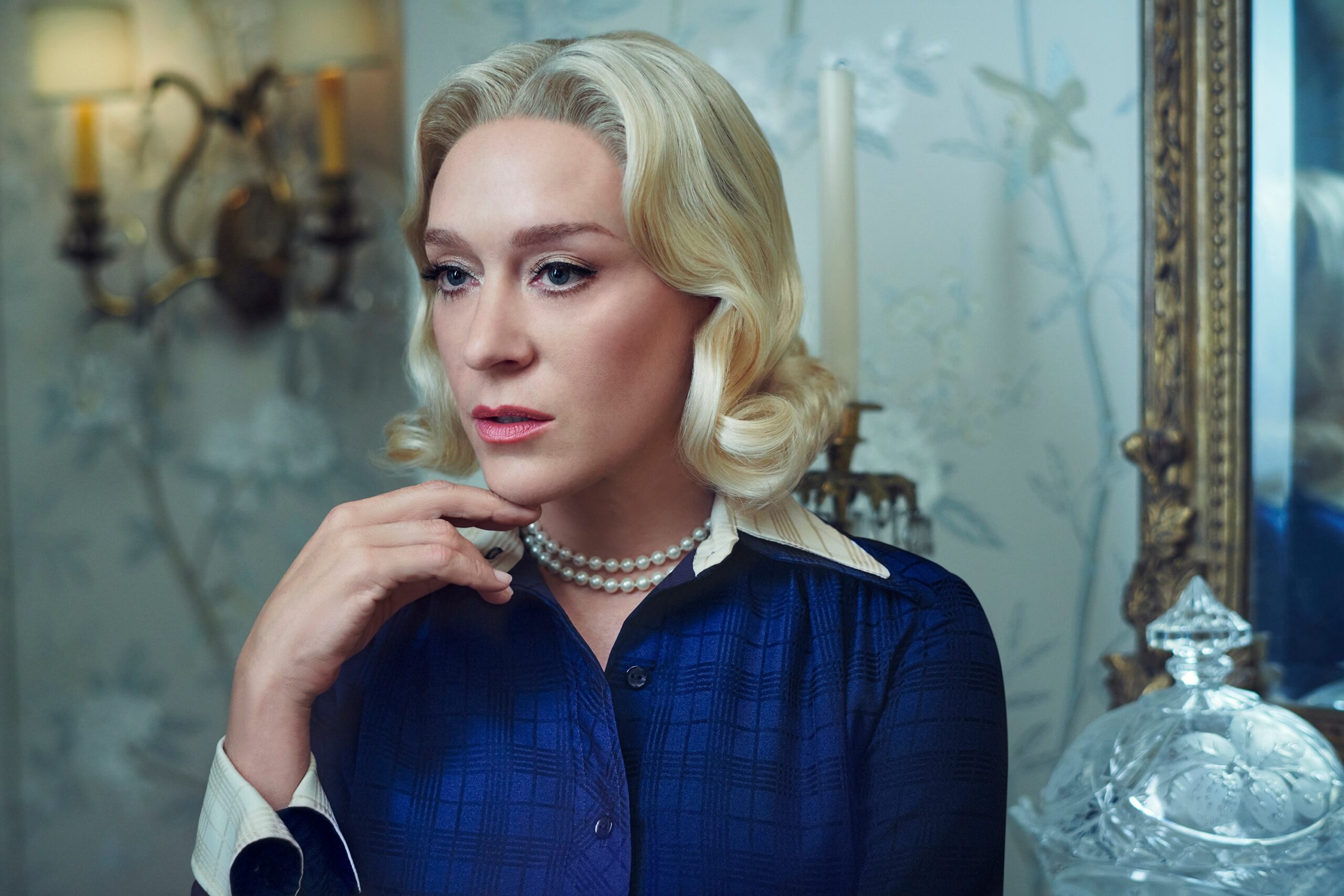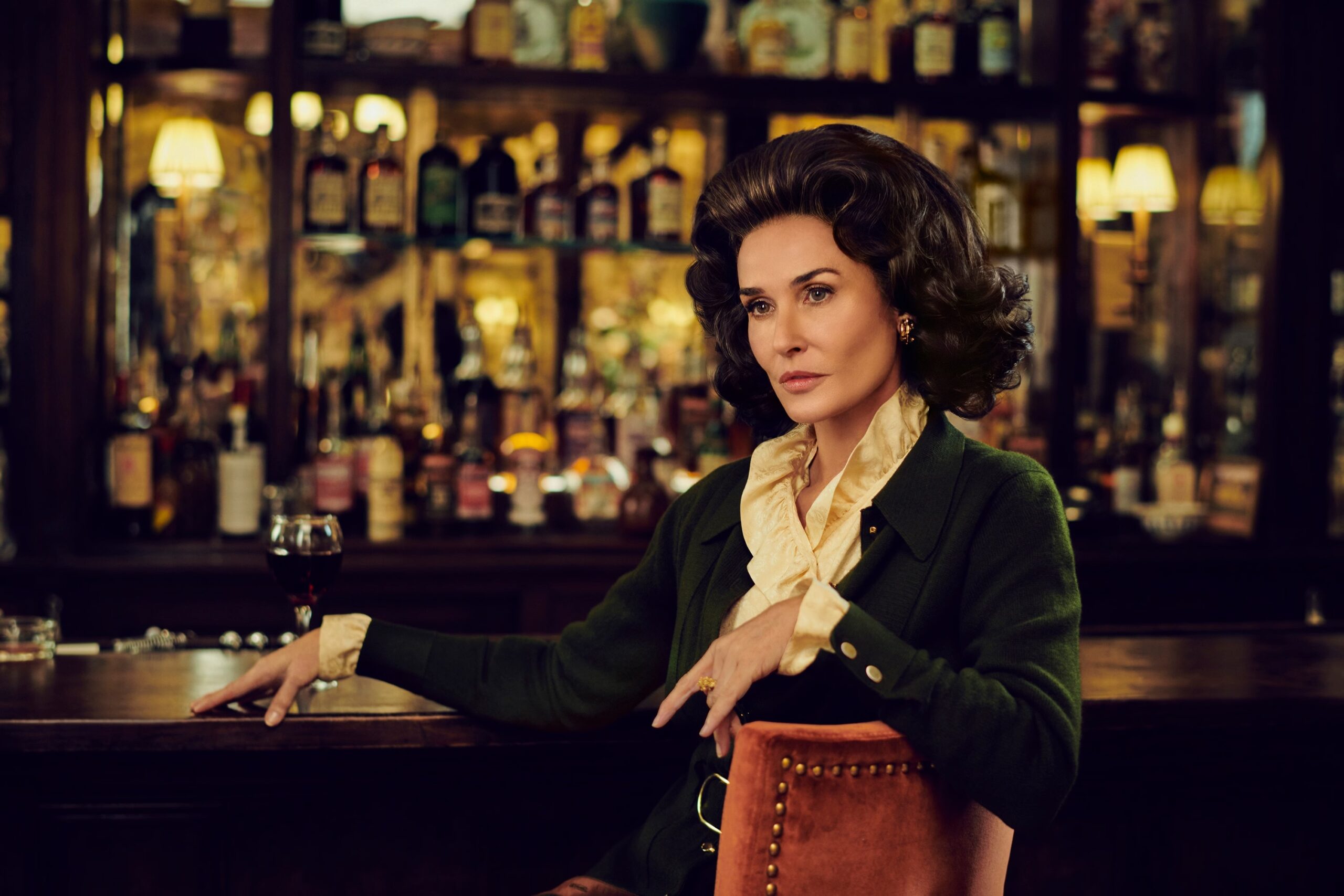‘Feud: Capote vs. The Swans’ Presents a Star-Studded Look at Truman Capote’s Fall From Grace

In its second outing, the anthology series 'Feud' examines Truman Capote's friendship and dramatic fallout with a group of socialites he nicknamed The Swans. Photo: Bettmann/Getty Images
For its first outing, Ryan Murphy’s Feud anthology series covered the legendarily bitter rivalry between actors Joan Crawford and Bette Davis against the backdrop of the Hollywood studio system. The hotly-anticipated second instalment, Feud: Capote vs. The Swans (premiering Wednesday Jan. 31 on FX), explores the epic friendships and, ultimately, flame-out of acclaimed American writer Truman Capote among Manhattan’s most influential socialites, whom he nicknamed his “Swans.”
This latest examination of clashing personalities is based on Laurence Leamer’s 2021 book Capote’s Women: A True Story of Love, Betrayal, and a Swan Song for an Era, which delves into the waning days of high society in a rapidly shifting cultural landscape as much as it does the particular workings of Capote’s inner circle. The eight-episode series recounts the fallout from the planned tell-all that caused the Swans to unceremoniously cut him, after which he descended into the hedonism of Studio 54, drink and drugs, and self-obsession.
Glamour, gossip, ambition and betrayal are a heady cocktail. Here’s a preview of the season’s most vicious and delicious show.
True Crime and Literary Celebrity
Capote’s social ascent and self-implosion has fascinated since his heyday. Given that he had a lonely upbringing in small-town Alabama, where his childhood best friend was writer Harper Lee (To Kill a Mockingbird), it remains one of the most puzzling and most-discussed society scandals ever, beginning with George Plimpton’s oral biography through biopics like 2005’s Capote (for which the late Philip Seymour Hoffman won the Academy Award for Best Actor) and continuing today with documentaries like The Capote Tapes.
Depicting an epic clash of egos like Feud, however, requires not only deft direction (from Gus Van Sant) but an all-star cast. Here, British character actor Tom Hollander, 56, (The White Lotus) stars as Capote, impish scribe and author of Breakfast at Tiffany’s – the basis for the iconic Audrey Hepburn movie. The series catches up with the writer around the outrageous success of In Cold Blood, his groundbreaking true crime novel about a brutal 1959 quadruple murder in Kansas. When it was published in January of 1966, In Cold Blood ushered in a new type of true crime (one that Capote dubbed the “nonfiction novel”) and, by becoming the bestselling book of the decade, it also made him rich.
Iconic Women Playing Iconic Women
As you can imagine, being both a literary celebrity and raconteur with snarky wit made him entertaining to 55-year-old Naomi Watts’s powerhouse Babe Paley and her friends. Paley, queen bee of the Park Avenue mavens, married into power via CBS chairman William Paley. (The role of media tycoon Paley is, incidentally, the final on-screen appearance of Treat Williams, who died in a motorcycle accident last summer at age 71.)


Despite living in a deeply homophobic era, Capote was the rare openly gay celebrity. As such, the series also chronicles his longtime romantic partner Jack Dunphy (Joe Mantello, 61) and abusive boyfriend John O’Shea (Russell Tovey, 42). Author Kelleigh Greenberg-Jephcott, who similarly chronicles the group in Swan Song, calls the women “the perfect novelistic subject, the mid-century Anna Kareninas and Madame Bovaries.” Other parallels can be found in the social milieu celebrated on the Julian Fellowes HBO drama The Gilded Age – Capote isn’t unlike Ward McAllister, Mrs. Astor’s Southern-fried partner in crime and confidante.
The social circle is built around the intense friendship that forms between Capote and Paley, a former Vogue fashion editor, when the writer hitches a ride to Jamaica on the Paley private plane with a movie producer pal. But the performance of art house “it” girl Chloë Sevigny, 49, as the chicly pragmatic C.Z. Guest (one of the few women who didn’t cut Capote entirely, apparently because she hadn’t told him all her secrets) gives Watts competition for MVP.


And 59-year-old Diane Lane’s gravitas works for the sharply witty Slim Keith (who, during her previous marriage to filmmaker Howard Hawks, helped make Lauren Bacall a movie star), with Callista Flockhart, 59, as Jackie Kennedy’s mischievous sister Lee Radziwill – at the time, styled “Princess Radziwill” through her marriage to a Polish aristocrat. Sixty-one-year-old Demi Moore’s ill-fated Ann Woodward rounds out the coterie alongside Molly Ringwald, 55, as Johnny Carson’s second wife Joanne, a free spirit at whose Los Angeles house Capote was a frequent guest. It’s there that he died, in 1984.
The Party of the Century
From Naomi Watts’s rhinestone-studded swan clutch to Demi Moore’s spray of feathers, the cast’s uniformly black and white finery at the New York premiere was a nod to the dress code of the famous Plaza Hotel party Capote threw on November 28, 1966 for 540 guests. The legendary Black & White Ball is, naturally, among the series set pieces.
The masquerade party was ostensibly thrown in honour of Washington Post publisher Katharine Graham. I say ostensibly because increasing her profile outside of Washington was Capote’s stated pretext but, in her Pulitzer-winning 1997 autobiography Personal History, Graham admits that she knew that was an afterthought. Naming her as guest of honour diffused his strong whiff of crass self-promotion (which it was).
Not only one of the biggest events of the New York social calendar – one that merited a long sequence in Don DeLillo’s masterful novel Underworld – it has since been called “the party of the century.” It took Capote months of meticulous planning such that one editor called it “as much a major work as some of his short stories.” Elliott Erwitt’s documentary photographs of the night in question reveal a who’s who at the intersection of wealth, power, celebrity and royalty that included newlyweds Mia Farrow and Frank Sinatra, Gloria Steinem (who wrote a feature about the party for Vogue), Tallulah Bankhead, Gordon Parks, Henry Fonda, Cecil Beaton, Oscar de la Renta, Norman Mailer, Rockefellers and Vanderbilts – as well as the doorman of Capote’s United Nations Plaza building. The guest list was a testament to exclusivity, idiosyncrasy, and star power that the Costume Institute’s annual Met Gala can only hope to rival.
Loose Lips Sink Ships
In Cold Blood wasn’t Capote’s only true crime tale: the social chronicler also wrote about the accidental 1955 shooting death of banking heir Billy Woodward by his wife Ann (who was exonerated after claiming she mistook him for an intruder). The incident formed a chapter in his unfinished novel Answered Prayers, a thinly-disguised roman à clef that satirized the women’s lives and exposed their secrets. Specifically, he implied Woodward had shot her husband deliberately.


Everything is copy, as Nora Ephron famously said. But it has consequences. In 1975, following Esquire’s publication of that chapter as an excerpt, the American socialite Ann Woodward died by suicide. He continued to be the author of his own downfall by then publishing “La Cote Basque, 1965,” another scathing work-in-progress excerpt named for the group’s favourite French restaurant. A lightly fictionalized but easily recognizable Paley was the main character and whispered indiscretions over luxurious lunches.
“It’s a time-honoured literary tradition for a writer to bite the hand that feeds him,” Tina Brown opened her New York Times review of the unfinished novel, finally published posthumously in 1986. “It is also a time-honoured literary tradition that when their scalded source material cuts them at parties writers always seem surprised.”
Several speculative historical novels and histories have since attempted to fill in the gaps about what motivated Capote to betray these women and blow up his life. Especially because the melancholy and rather tawdry glamour of his 1958 novella Breakfast at Tiffany’s proved he was delicately attuned to the economic precarity of modern womanhood.
Only a self-destructive streak could explain why Capote, whose childhood was one of abandonment and neglect, worked to achieve literary fame and ingratiate himself into rarified circles, and then explode it. Was Answered Prayers revenge for years of being treated like a gay pet, or the miscalculation of a seriously damaged person? Feud probes the pain at the core of his writer’s block and the insecurity that arguably make him a tragic figure.

Dedicated Followers of Fashion
The costume design on Feud: Capote vs. The Swans is next-level glamour by longtime Ryan Murphy collaborator Lou Eyrich and includes loans from storied society jewellers (like Verdura). For the Black and White Ball alone, Eyrich enlisted designer Zac Posen to create all the Swans’ gowns. The real-life couture sets the bar high: Graham, for example, donned a beaded Balmain gown with Halston mask (both now in the Met collection), and because the timing of Halston’s first womenswear collection coincided with the party, he also created then-ingenue Candice Bergen’s mink-trimmed gown and matching bunny mask.

However extravagant their gowns and jewels at the Ball, it was the Swans’ lavish spending on impeccable everyday style that cemented their influence and enduring status as fashion icons. For instance Paley, with her flawless wardrobe of Balenciaga, Givenchy and Valentino, was named to the International Best Dressed List Hall of Fame in 1958 (Watts characterizes her relentless perfection “almost like a piece of performance art“).
Beneath their lacquered bouffants the women calculated an air of refinement. As a fashion journalist recently declared, the “ladies who lunch” aesthetic is having a moment. That tailored louche modern glamour is certainly easier to emulate than, say, the well-upholstered taffetas of Julian Fellowes’s gilded age socialites.
Swans may be elegant and beautiful but never forget that, when feeling threatened, they have a reputation for being vicious. “Either I’m going to kill it,” Capote had taken to quipping of Answered Prayers, “or it’s going to kill me.”
Like Capote’s illicit novel, Feud pulls back the curtain on it all.
Feud: Capote vs. The Swans debuts Wednesday, Jan. 31 on FX.
RELATED: